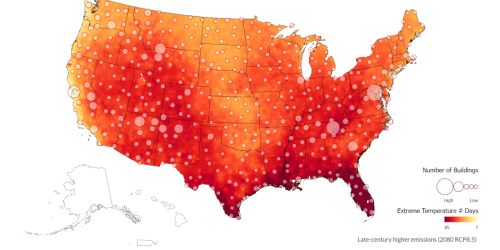Mitigating the effects of sea-level rise is complicated by the uncertainty involved in projecting future impacts. It is particularly difficult to characterize ambiguity that arises when scientists do not know or cannot agree on important relationships within a system or the probability of certain elements. Communicating this ambiguity to decision makers effectively is key to developing quality coastal adaptation policies. A new review paper, partially supported by the Climate Program Office’s Climate Variability & Predictability (CVP) Program, focuses on scientific assessment reports to examine how uncertainty and ambiguity have been represented in the past, and highlights key ways to communicate these topics to coastal decision makers.
The authors, including CVP-supported Baylor Fox-Kemper, take a close look at the methods in the IPCC’s Sixth Assessment Report (AR6) to communicate uncertainty. AR6 utilizes accessible data products like tables and figures that are adaptable between researchers, policymakers and other stakeholders, to communicate sea level information in a way that is compatible with multiple perspectives. The paper, published in Nature Climate Change, argues that the AR6 approach will ease the task of policymakers who must balance uncertainty based on risk at the regional level, and improves upon previous assessment reports which did not describe probability so comprehensively. This work is part of the Climate Process Teams (CPT), a partnership between NOAA’s CVP Program, the National Science Foundation (NSF), and the Department of Energy (DOE). These CPT projects aim to improve how ocean and atmospheric processes are represented in climate models.










